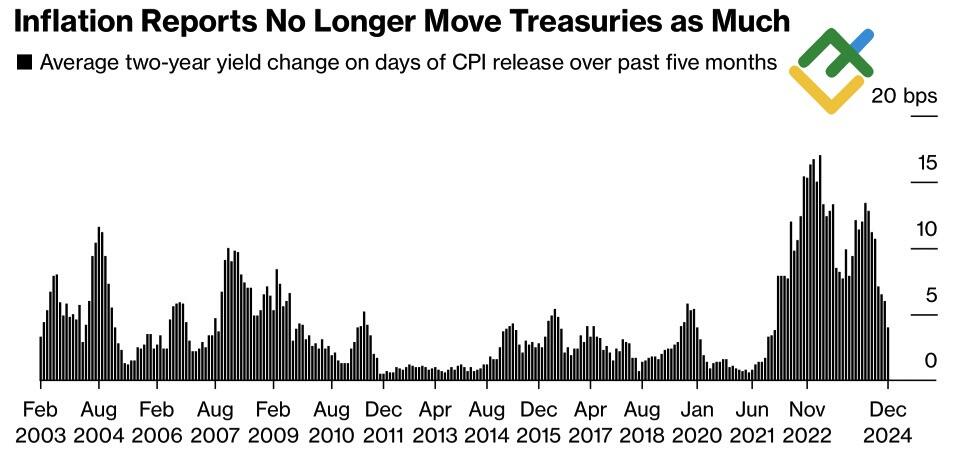
Donald Trump has won the White House, pledging that inflation will vanish completely. Ironically, it may be him who accelerate the Consumer Price Index (CPI). Trump previously criticized the strong dollar but is now defending it. He has prepared all the tools to impose tariffs, although he is ready for negotiations. The market is misguided. Let’s discuss this topic and make a trading plan for the EURUSD pair.
The article covers the following subjects:
Major Takeaways
- Accelerating inflation will not force the Fed to abandon rate cuts.
- Fewer cuts are expected in the updated FOMC forecasts.
- The ECB may add to the euro’s downtrend.
- The EURUSD pair’s trajectory depends on the test of the support area of 1.0455–1.047.
Daily US Dollar Fundamental Forecast
The recent acceleration in US consumer prices from 2.6% to 2.7% and core inflation remaining at 3.3% allows the Fed to implement a 25bps cut in the federal funds rate to 4.5% in December. However, in updated forecasts, many FOMC members will likely adopt a more cautious approach to the scale of monetary expansion in 2025, which will support the US dollar. As anticipated, the EURUSD exchange rate has declined despite an increase in the likelihood of further monetary easing at the next central bank meeting from 86% to 98%.
US Inflation Change
Source: Wall Street Journal.
Meanwhile, the US dollar continues to gain ground. The US economy is demonstrating consistent growth even in the absence of the fiscal stimulus and bureaucratic reforms that Donald Trump has proposed. The rest of the world is experiencing turbulence and bracing for new tariffs. Investors had previously assumed that the Trump administration would oppose a strong dollar. However, recent actions, including threats directed at the BRICS bloc, suggest that the opposite may be true.
At the same time, there are other factors that the markets are misunderstanding. Donald Trump may not be as straightforward as he claims. He has stated that he owes his victory in the election to groceries, yet prices remain high. This has led to a significant shift in voting patterns, with Americans turning against the Democrats. However, tax cuts, deregulation, and tough anti-immigration policies, coupled with tariffs, could lead to inflationary pressures. While inflation is already starting to accelerate, the debt market is less responsive than it was in 2022–2023.
US Treasury Bond Yield Change After CPI Report
Source: Bloomberg.
This can be attributed to the transparency of the Fed’s monetary policy. The acceleration of consumer prices in the autumn will not prompt the central bank to abandon its plans for a rate cut in December. However, in January, it is likely to put the cycle of monetary expansion on pause. Is it possible that the Fed will delay its next move? This is unlikely. If borrowing costs had not declined at the end of the year, President Trump would have had the opportunity to comment on the lack of rate cuts, citing the previous administration’s actions.
At the same time, the ECB may push the EURUSD pair lower. The weakness of the European economy, the political uncertainty in Germany and France, which could further slow GDP growth, the proximity of inflation to the target, and concerns about potential tariffs will force the regulator to cut the deposit rate by 25 bps to 3% in December, requiring Christine Lagarde to adopt a dovish stance on monetary policy.
Daily EURUSD Trading Plan
However, the current political and international trade uncertainty may act as a deterrent for the ECB, which could impact EURUSD quotes. The major currency pair may rebound if the euro fails to pierce the support area of 1.0455–1.047. Conversely, if this area is broken through, one can open short trades, adding them to the ones formed at the 1.0615 level.
Price chart of EURUSD in real time mode
The content of this article reflects the author’s opinion and does not necessarily reflect the official position of LiteFinance. The material published on this page is provided for informational purposes only and should not be considered as the provision of investment advice for the purposes of Directive 2004/39/EC.
{{value}} ( {{count}} {{title}} )
This post is originally published on LITEFINANCE.





